Kataifi Pastry (also known as Shredded Phyllo Dough and Kadaifi) is a popular Middle Eastern pastry. It's used to make various delectable desserts, including cheese kunafa, bird nest baklava, and this Dubai chocolate bar recipe! Learn how to make this simple pastry dough at home with this easy 5-ingredient recipe.
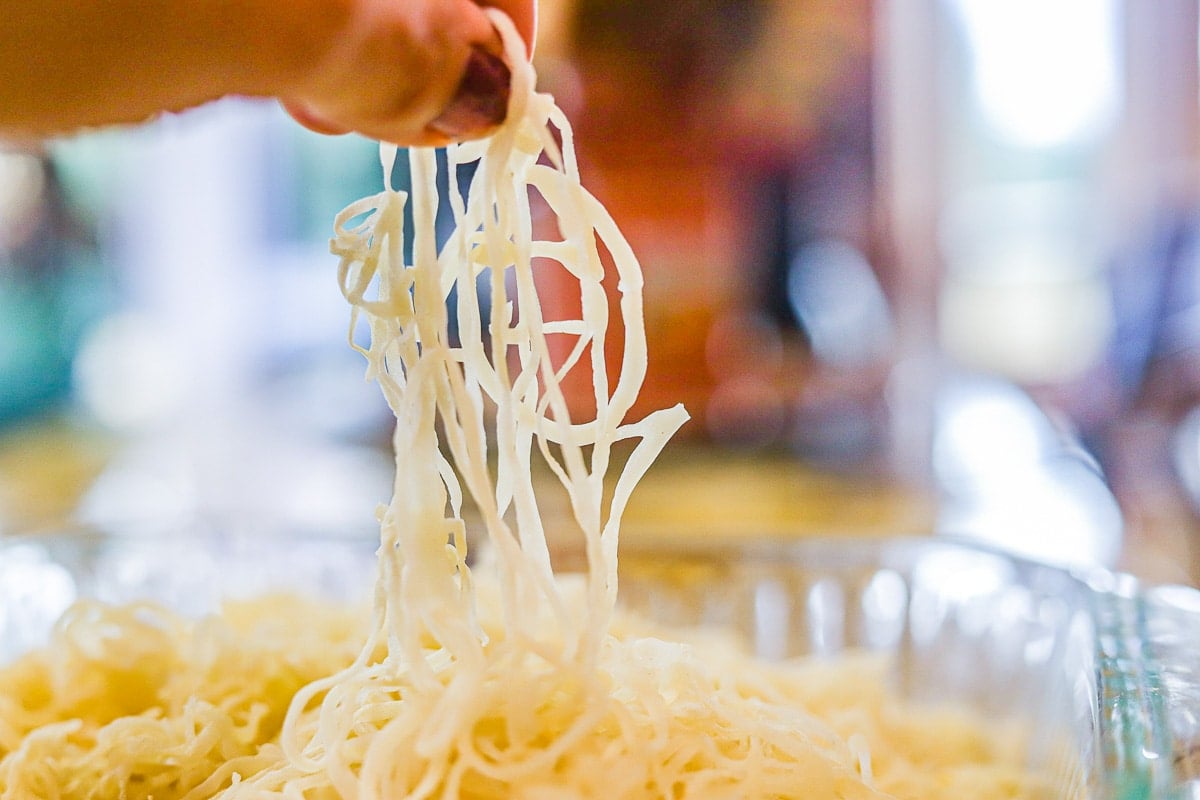
Besides the Middle East, Kataifi is also popular in the Mediterranean and Balkan regions (including Turkey and Greece), where desserts made with kataifi, like Kadayif, are quite popular!
This pastry has gained in popularity recently due to viral videos, where it is used along with pistachio cream to make Dubai chocolate-covered strawberries and an assortment of other Dubai chocolate-flavored treats.
Although kataifi pastry is commonly referred to as Shredded Phyllo Dough, that's not technically accurate. Unlike phyllo dough (paper-thin sheets of dough) Kataifi pastry is spun and sometimes compared to shredded wheat.
So, how do you make it at home? Easy! All you'll need is a large flat pan, a squeeze bottle, and a few simple ingredients.
Jump to:
😍 Why You'll Love This Recipe
- Kataifi is hard to find, especially in small towns. Making your own is a great way to still enjoy desserts that require it.
- It's cheaper to make it from scratch.
- This recipe only requires a few simple ingredients that almost everyone has at home.
- You can make it ahead of time and freeze it until you need it!
🔖 Ingredient & Substitutions
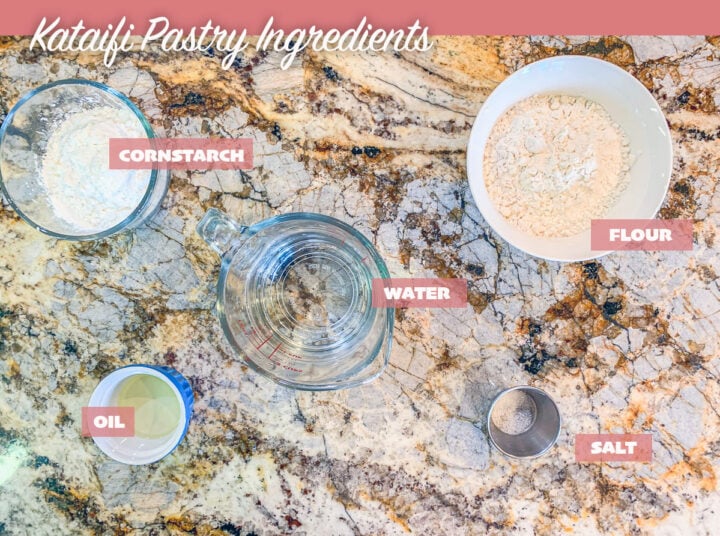
- Flour: I use all-purpose white flour in the batter. I have not tried the recipe with other flours so I can't say with certainty if they would work or not.
- Oil: Vegetable works well in this recipe and does not impart a strong flavor like, for example, olive oil would.
- Salt: I prefer sea salt.
*Find a full list of ingredients in the recipe card below.
🍰 How to Make Kataifi
Step 1: Whisk flour, cornstarch, and sea salt in a medium-sized mixing bowl.
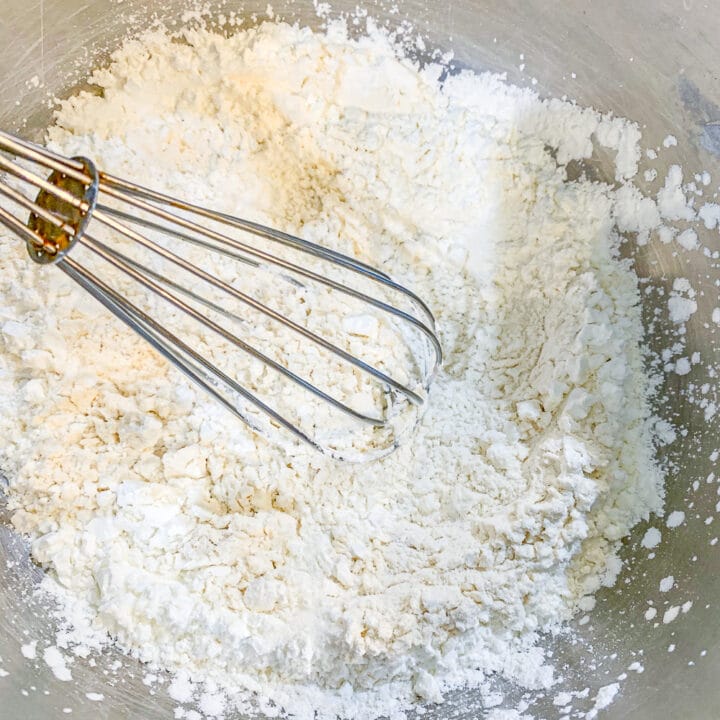
Step 2: Add oil and water and whisk until smooth.
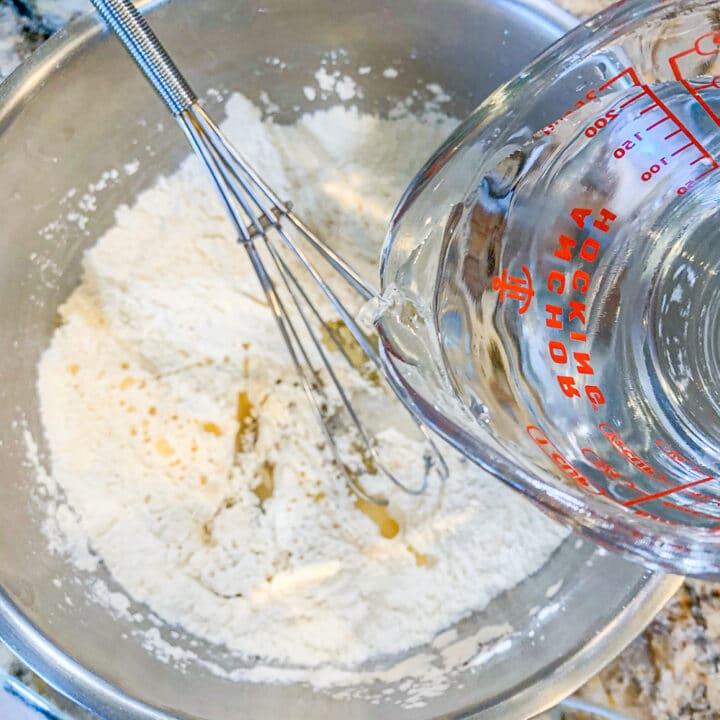
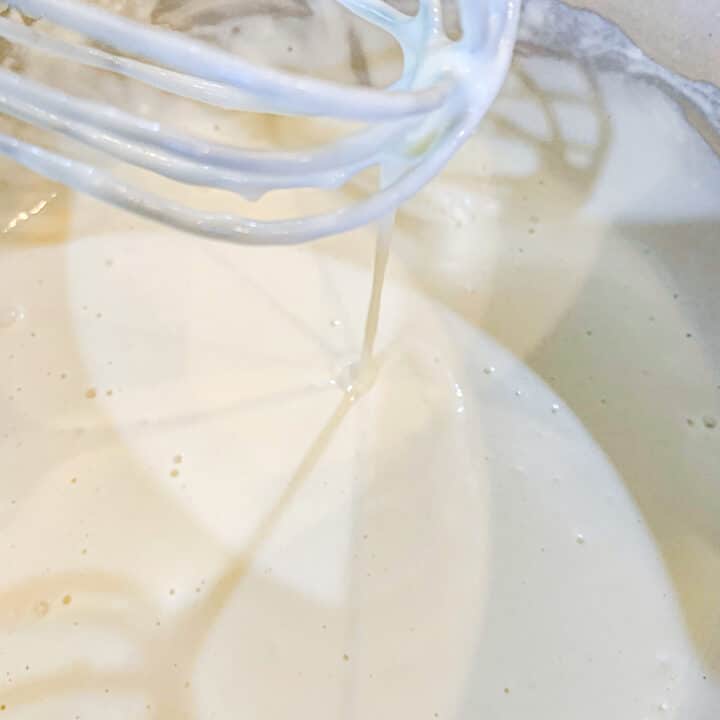
Step 3: Strain the batter through a sieve to make sure the batter is lump-free.
Would you like to save this recipe?
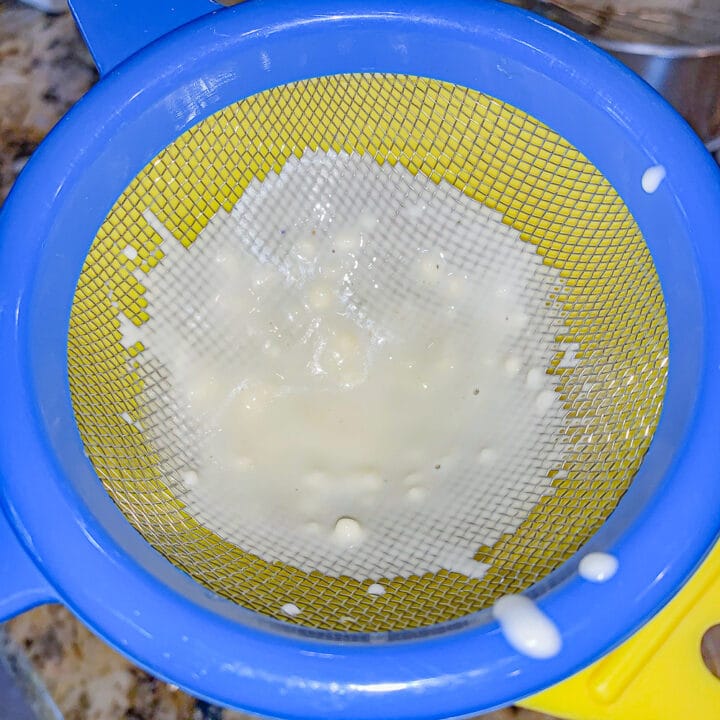
Step 4: Pour the batter into a squeeze bottle with a very small hole cut into the top.
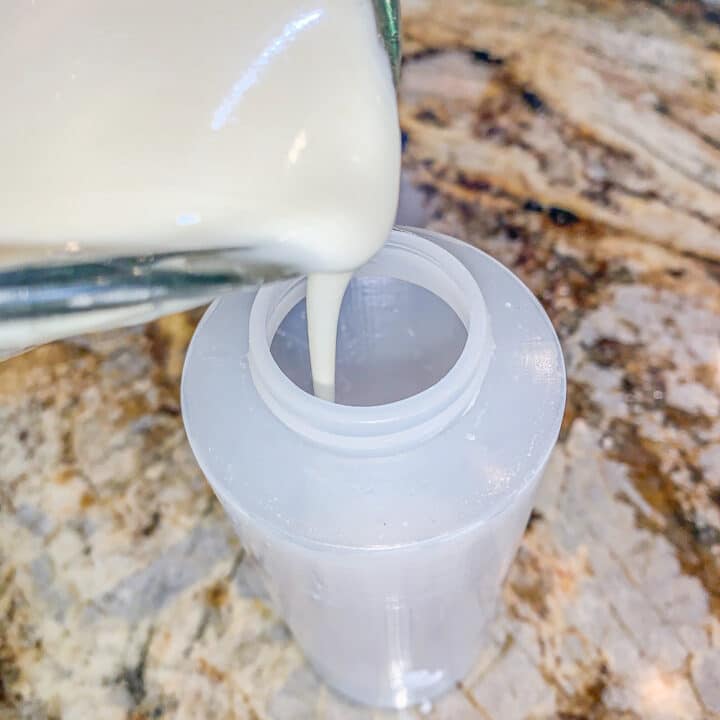
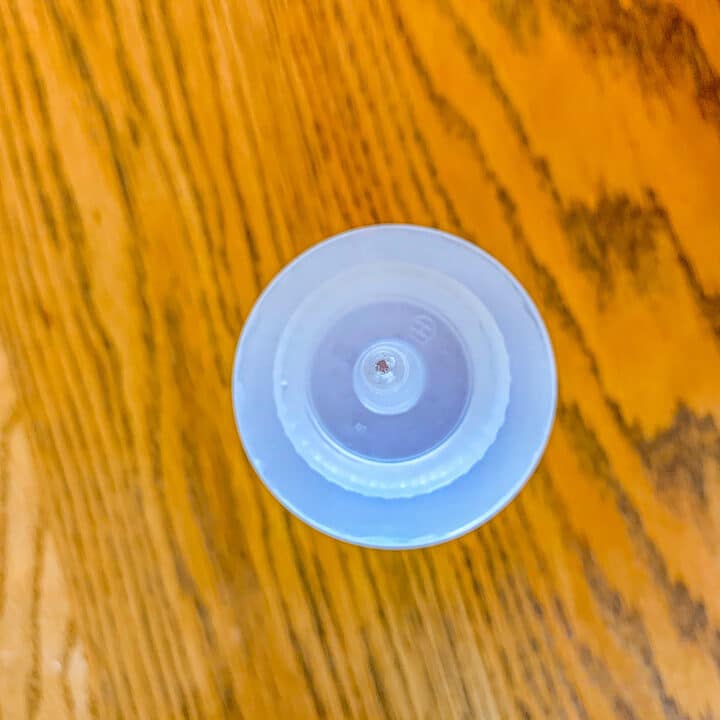
Pro Tip: The size of the hole is very important. If it's too large, the strands of Kataifi will be too thick. You want them as thin as possible.
Step 5: Heat a non-stick pan over medium heat until it's very hot. Gently squeeze the bottle to dispense a very thin stream of batter in a circular motion, starting from the center of the pan and working toward the edge of the pan.
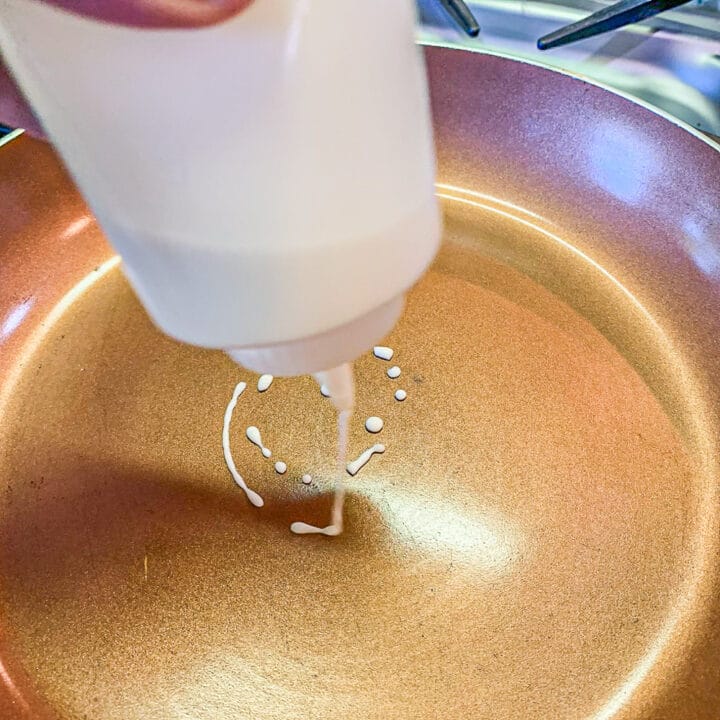
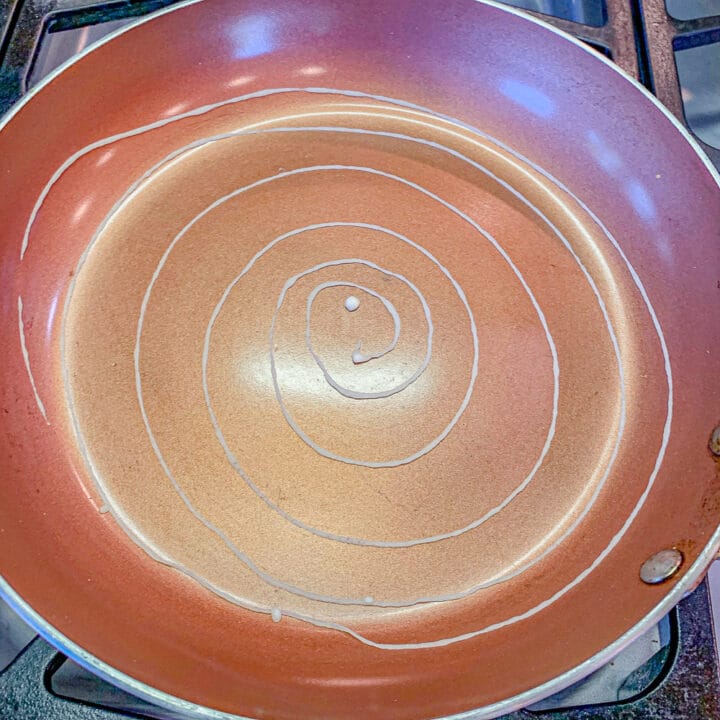
Pro Tip: After 5 to 10 seconds, the pastry will begin to peel off of the pan. Once it does, gently pick it up with a spatula and drop it into a bowl. Cover the bowl with a damp towel and continue this process until all the batter is used up.
Step 6: Shred the strands into smaller sections before using them in your baklawa, Kanafeh, or Kadaif recipe.
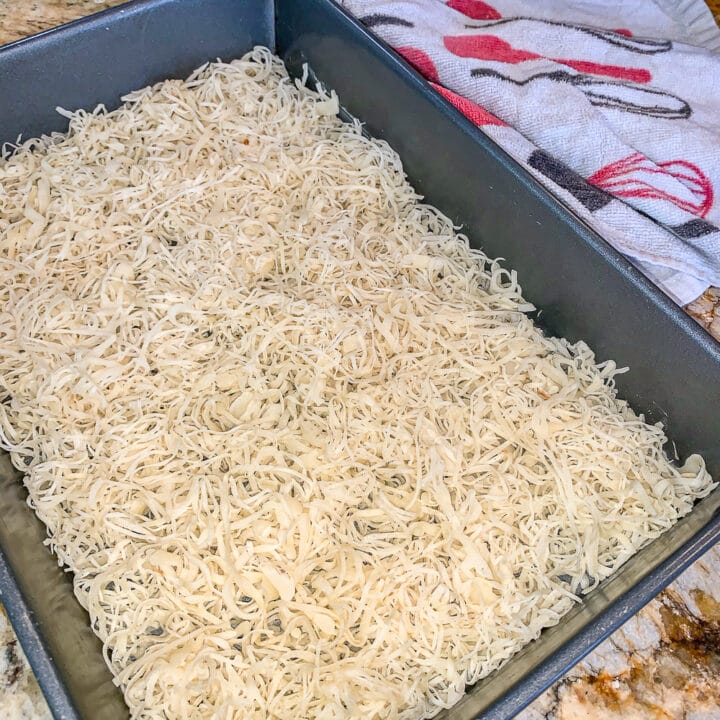
Looking for other easy recipes? Be sure to try my new puff pastry baklava recipe!
What Readers Are Saying
This recipe was really easy and delicious. It took me only 30 minutes as said. I tried it with gluten free flour instead of regular, and it turned out the exact same! The batter did what it was supposed to! Thanks for the outstanding recipe.
-Rydia
🤷🏻♀️ Recipe FAQs
Kataifi Pastry is made with a mixture of flour, cornstarch, salt, oil, and water. This thin batter is then spun to make the pastry's fine strands.
Yes, you can freeze Kataifi. In fact, when purchasing Kataifi, it is usually found in the frozen aisle of your grocery store. It is recommended that the frozen pasty is not defrosted on the counter, but instead, overnight in the refrigerator.
There seems to be a misconception that you can make Kataifi by shredding phyllo dough. However, phyllo dough and Katiafi are two different products and you can't make one with the other.
Phyllo dough is made with a dough that is rolled out into very thin and delicate sheets. Kataifi is made with a batter that is spun into fine strands that look similar to vermicelli.
Kataifi is usually used to make Middle Eastern and Greek desserts, including Baklava and cheese kunafa. Kataifi is used to make Turkish Sari Burma Baklava.
One way to use this "shredded dough" is to mix it with melted butter, then add half of it to a pan. Next, sprinkle the kataifi with chopped nuts (pistachios, walnuts, or almonds) and spices (cinnamon, cloves, and cardamom). The next step is to add the remaining Kataifi and bake it in the oven until golden brown. The final step is to drizzle the pan with cooled syrup made with honey, cinnamon sticks, cardamom, and cloves.
👩🏼🍳 Pro Tips
- Even though your dough might seem very smooth, you're going to want to strain it before transferring it to the squeeze bottle, otherwise, the tiny hole will get clogged.
- Keep in mind you want the strands to be as thin as possible. If you don't have a squeeze bottle, another option is to use a piping bag.
- If you notice that the pastry is brown when you remove it from the pan, it means the heat is too high and needs to be adjusted. The strands should remain white.
- If you dispense the batter side to side, instead of in a circular motion, the edges of the pastry will be too thick. For this reason, I recommend going in a circular motion instead.
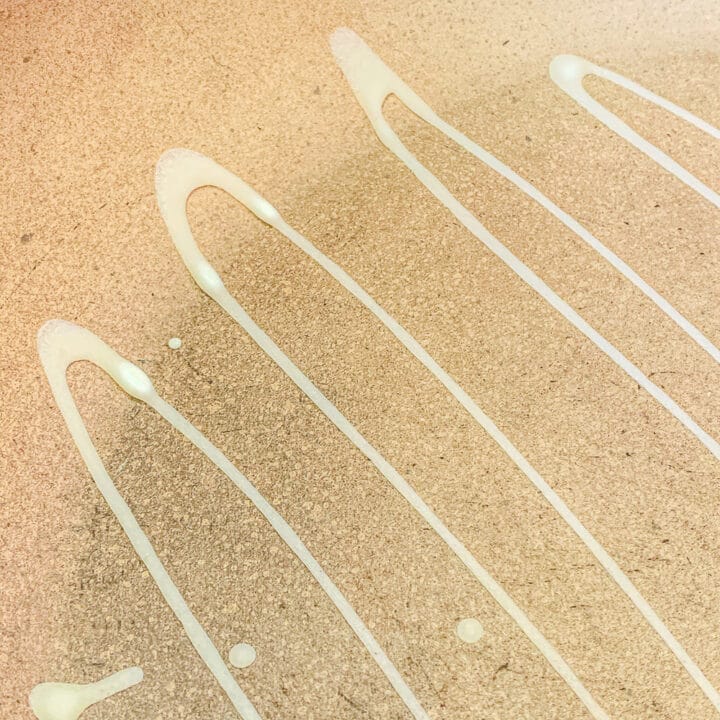
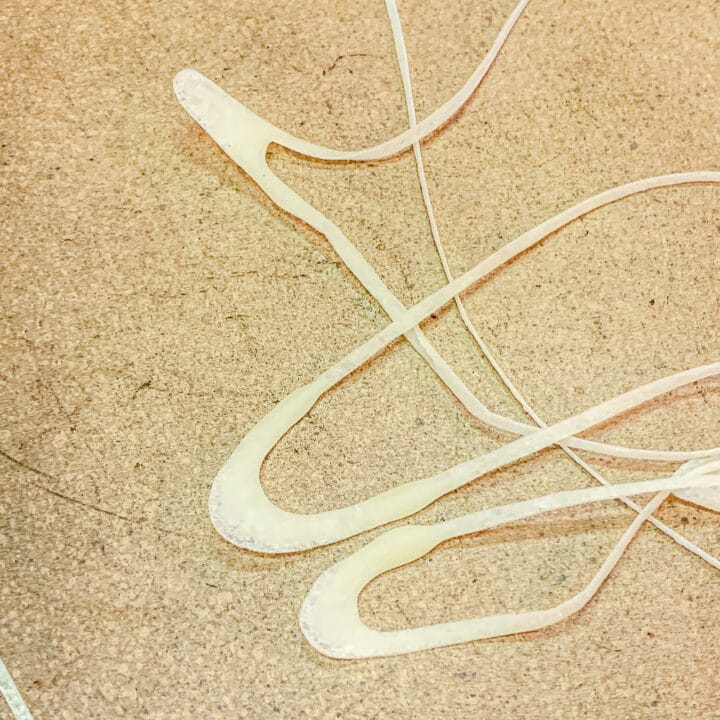
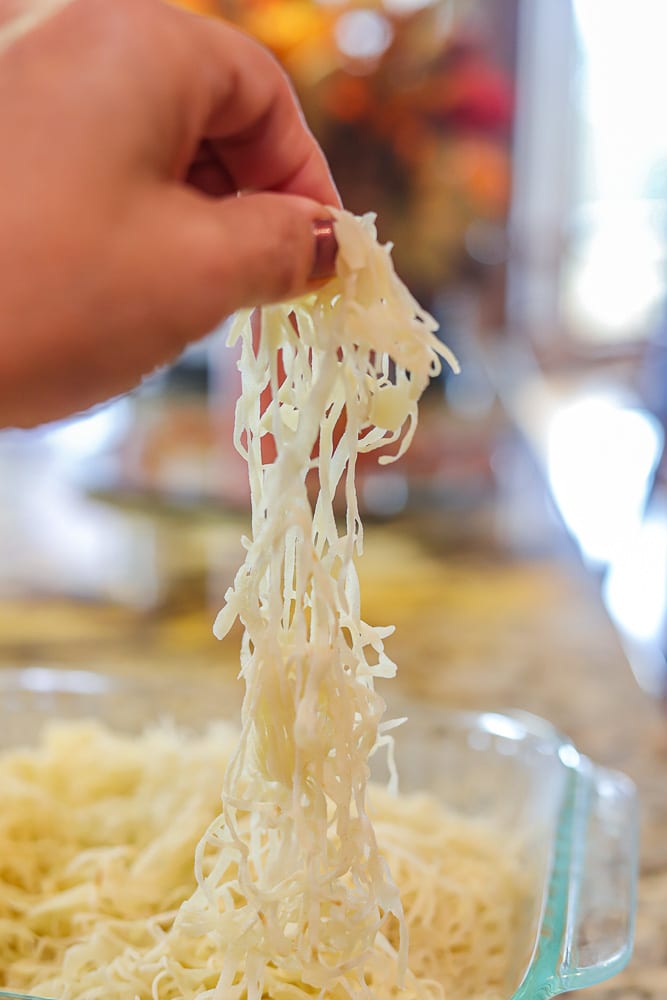
🥮 More Mediterranean Recipes
Did you make this recipe?
📖 Recipe

How to Make Kataifi Pastry From Scratch
Ingredients
Equipment
Method
- Whisk flour, cornstarch, and sea salt in a medium-sized bowl. Add oil and water and whisk until smooth.
- Strain the batter through a sieve to make sure the batter is lump-free. Pour the batter into a squeeze bottle with a very small hole cut into the top.
- Heat a non-stick pan over medium heat until it's very hot. Gently squeeze the bottle to dispense a very thin stream of batter in a circular motion, starting from the center of the pan and working towards the edge of the pan.
- After 5 to 10 seconds, the pastry will begin to peel off of the pan. Once it does, gently pick it up with a spatula and drop it into a bowl. Cover the bowl with a dishtowel and continue this process until all the batter is used up.
- Shred the strands into smaller sections before using them in your recipe.
Nutrition
Video
Notes
- Even though your dough might seem very smooth, you're going to want to strain it before transferring it to the squeeze bottle, otherwise, the tiny hole will get clogged.
- Keep in mind you want the strands to be as thin as possible. If you don't have a squeeze bottle, another option is to use a piping bag.
- If you notice that the pastry is brown when you remove it from the pan it means the heat is too high and needs to be adjusted. The strands should remain white.
- If you dispense the batter side to side, instead of a circular motion, the edges of the pastry will be too thick. For this reason, I recommend going in a circular motion instead.

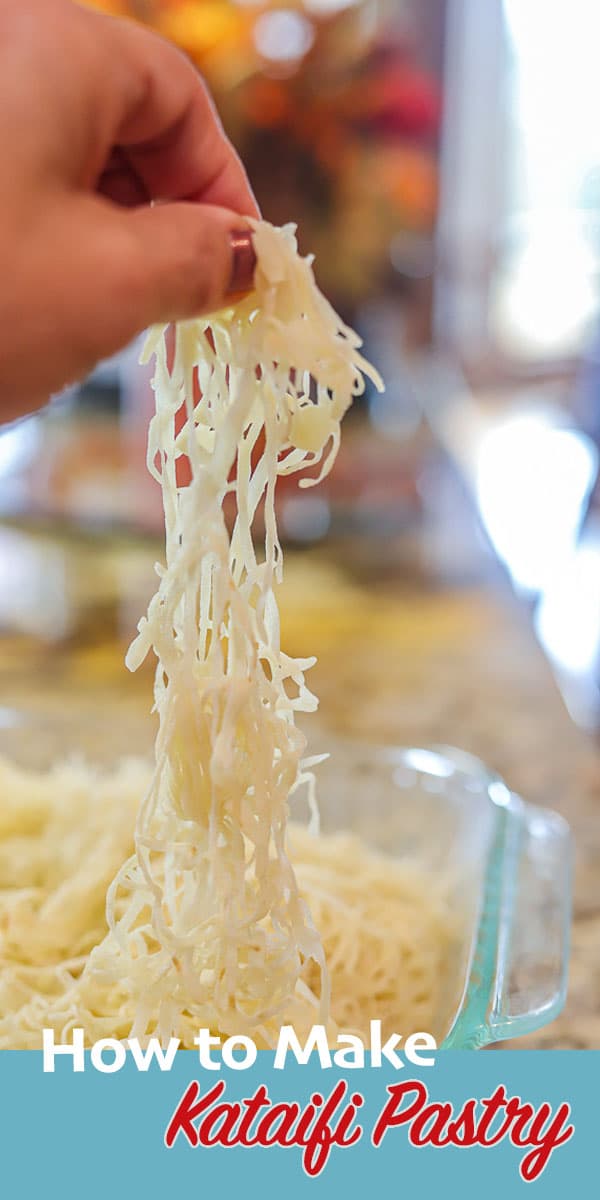
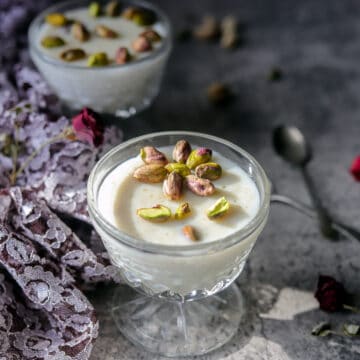
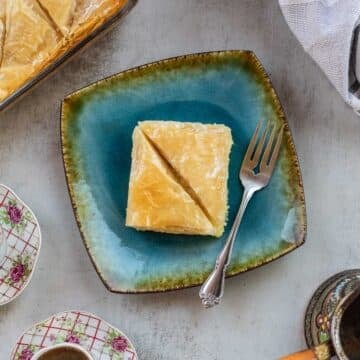
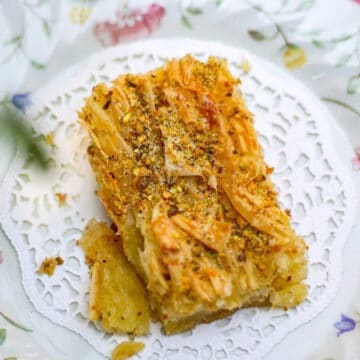
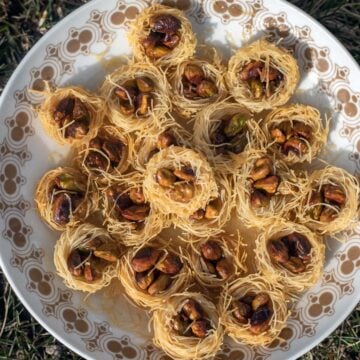
Howard Spaulding says
Directions were spot on and very helpful. However, it did take somewhat longer than 30 minutes. That's probably due to the fact that I realized I only had 1/2 cup of cornstarch so I had to make a mad dash to the store. excellant recipe and I will certainly keep coming back to this one.
Hilda Sterner says
Thanks, Howard, I appreciate the review! You're right, I didn't account for the time it took you to go to the store, haha. You'll also get faster, with more practice. 🙂
Jessica says
How do you freeze this for future use
Hilda Sterner says
Hi Jessica, Just put what you don't use in a freezer bag and toss it in the freezer. Then defrost in the fridge overnight and use.
Cleo Grose says
amazing!
Hilda Sterner says
Thank you!